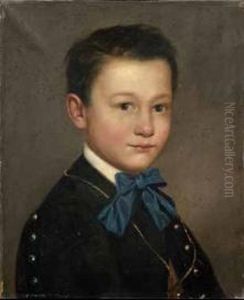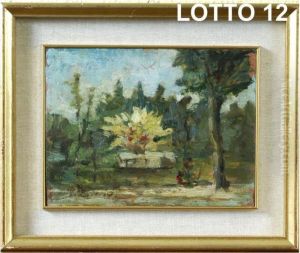Ponziano Loverini Paintings
Ponziano Loverini was an Italian painter born on August 3, 1845, in Gandino, a town in the province of Bergamo, Lombardy. He displayed a talent for painting from an early age, which led him to pursue an education in the arts. Loverini enrolled at the Accademia Carrara di Belle Arti in Bergamo, where he was a pupil of the renowned artist Enrico Scuri. His early works were significantly influenced by his mentor and were characterized by historical and religious subjects, which were common themes in 19th-century Italian academic painting.
After completing his studies, Loverini traveled to Rome, where he was further inspired by the classical and Renaissance masterpieces that he encountered. His style continued to evolve, and he began to gain recognition for his work. He was deeply moved by the social conditions of his time, and this empathy was reflected in his art. Loverini’s most significant contributions to the art world are his realist paintings, which often depicted the lives of the poor and the working class with both dignity and compassion.
In addition to his realist works, Loverini also painted portraits and landscapes. His portraits were particularly noted for their psychological depth and the ability to capture the character of the sitter. His landscapes, on the other hand, often showcased the beauty of the Italian countryside and were marked by a keen observation of natural light.
Throughout his career, Loverini received various accolades and his paintings were exhibited in numerous exhibitions, not just in Italy but also internationally. He became an influential figure in the Italian art scene and also dedicated himself to teaching, passing on his knowledge to the next generation of artists.
Ponziano Loverini died on January 17, 1929, in Bergamo. His legacy is preserved in the collections of various Italian museums, and his works continue to be appreciated for their technical skill and their heartfelt portrayal of human experience.


